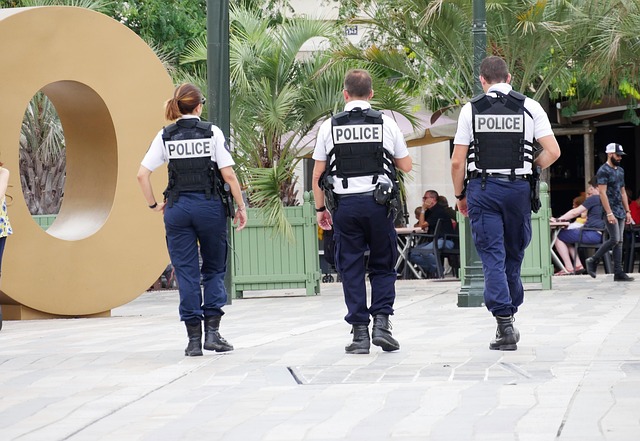The RF Securities Industry Regulation forms a critical framework for fair markets, with understanding its implications, especially in high-stakes cases involving forensic evidence, being vital. While forensic evidence is powerful, effectively challenging it requires strategic tactics like questioning methodologies and presenting alternative interpretations to ensure due process. This is crucial in financial cases, where collection methods from digital forensics to document retrieval must maintain integrity. Admissibility demands strict legal standards, requiring defense teams to question the reliability and relevance of forensic data at every stage. Mastering these strategies enables lawyers to challenge complex financial crime cases and potentially alter outcomes, especially with today's advanced digital evidence presentation and contestation complexities.
“The RF Securities Industry, a cornerstone of global finance, operates under stringent regulations aimed at fostering fairness, transparency, and market integrity. This article delves into the intricate world of industry regulation, setting the stage for understanding its impact on market dynamics. We explore the role of forensic evidence—a powerful tool in financial investigations—its collection, admissibility, and the legal landscapes that shape it. Furthermore, we uncover strategies to challenge digital forensics in court, offering insights for practitioners navigating this complex domain.”
- Understanding RF Securities Industry Regulation: A Foundation for Fair Markets
- The Role of Forensic Evidence in Financial Cases: Collection and Admissibility
- Challenges to Forensic Evidence: Legal Strategies and Case Law
- Best Practices for Presenting and Contesting Digital Forensics in Courtroom Settings
Understanding RF Securities Industry Regulation: A Foundation for Fair Markets
The RF Securities Industry Regulation is a cornerstone in ensuring fair and transparent markets. It encompasses a web of rules and guidelines designed to protect investors, maintain market integrity, and prevent fraudulent activities. At its heart, this regulation seeks to balance opportunities for growth with stringent oversight, thereby fostering a sustainable and trustworthy financial ecosystem. Understanding these regulatory frameworks is essential for all stakeholders, including those involved in high-stakes cases across the country.
Forensic evidence plays a pivotal role in many legal proceedings, particularly in the RF Securities Industry. However, navigating the complexities of such evidence requires meticulous attention. The general criminal defense strategy often involves challenging forensic evidence to ensure due process and fairness. In high-stakes cases, where millions hang in the balance, understanding how to effectively contest these findings can make all the difference. Knowing when to question methodologies, challenge assumptions, and present alternative interpretations is crucial for achieving just outcomes.
The Role of Forensic Evidence in Financial Cases: Collection and Admissibility
Forensic evidence plays a pivotal role in financial cases, offering a comprehensive view of an individual’s or entity’s financial activities and intentions. It provides crucial insights during investigations and trials, helping to unravel complex financial schemes. The process begins with meticulous collection methods—from digital forensics to document retrieval—ensuring the integrity and admissibility of evidence in court. This is particularly vital in white-collar defense cases, where achieving extraordinary results often hinges on how effectively forensic data can be challenged or supported.
Admissibility is a critical aspect, requiring strict adherence to legal standards and procedures. Defense teams must employ strategic methods to challenge the reliability and relevance of forensic evidence at every stage of the investigative and enforcement process. Understanding how such evidence is gathered, stored, and presented is essential in navigating the complexities of financial litigation. This approach ensures fairness and allows for robust defenses, especially considering the high stakes involved in white-collar cases.
Challenges to Forensic Evidence: Legal Strategies and Case Law
Forensic evidence plays a pivotal role in the securities industry, helping to uncover fraudulent activities and protect investors. However, challenges often arise when presenting such evidence in court, especially given the technical nature of the material. Understanding how to effectively challenge forensic evidence is crucial for both corporate and individual clients navigating legal disputes related to securities regulation.
Strategic legal arguments and a thorough understanding of case law are essential tools for disputing forensic findings. Legal professionals must scrutinize the methodology employed by the opposing side’s expert witnesses, highlighting any potential biases or weaknesses in their analysis. For instance, questioning the chain of custody regarding digital evidence or challenging the reliability of data extraction methods can significantly undermine its credibility. By leveraging these strategies, legal representatives can protect their clients’ respective business interests and potentially alter the outcome of cases involving complex financial crimes.
Best Practices for Presenting and Contesting Digital Forensics in Courtroom Settings
In the digital age, presenting and contesting forensics evidence in court has become a complex task. Best practices involve ensuring the integrity of data through robust collection methods, adhering to recognized standards like NIST guidelines, and employing validated tools and techniques. Transparency in the acquisition, preservation, and analysis processes is crucial for building a solid foundation. Legal professionals should also be adept at explaining technical aspects to judges and juries, translating complex forensics into easily understandable arguments.
When challenging forensic evidence in court, a winning defense strategy relies on thorough cross-examination of experts, questioning methodology, and potential biases. Demonstrating the limitations of current technologies and methods can undermine the reliability of digital forensics. By presenting alternative explanations and questioning the validity of findings, legal teams can sway juries towards more favorable verdicts in complex cases. This approach ensures a balanced assessment of evidence during jury trials, where understanding both the capabilities and constraints of digital forensics is key.
The regulation of the RF securities industry is a cornerstone of maintaining fair and transparent markets. As forensic evidence plays a pivotal role in financial cases, understanding its collection, admissibility, and potential challenges is essential for practitioners. By navigating the intricacies of legal strategies and case law related to digital forensics, professionals can effectively present or contest such evidence in courtroom settings. Armed with best practices, they are better equipped to ensure the integrity and reliability of forensic data, thereby upholding the highest standards of justice in the securities sector.






